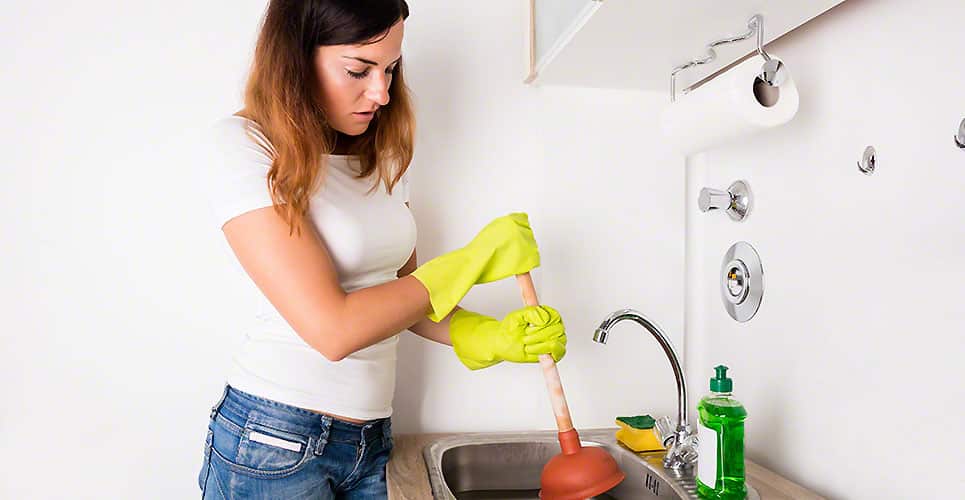Water softeners are lifesavers if you have hard water coming in directly through your taps and faucets. But there are times when the softened water tastes a bit briny. It should not happen if you maintain your water softener system. Here are all the reasons why it could happen.
The Resin Bed Isn’t Regenerated
First things first, you need to check the main thing that allows water to be softened. If you don’t know anything about water softening, then the process generally involves water going into the assembly through an inlet valve. From there, it stays in a mechanism called the resin bed. This is where the softening process occurs. The hardness-causing ions are replaced either by neutral ions or salt ions from the brine.
Now, this resin bed needs to be regenerated every so often. If you’re unable to do that, then your water will not be softened properly and it might lead to it tasting extremely salty. So, if you feel like your water tastes weird, even after softening, then try to remember the last time the resin bed was regenerated.
Water Softener Isn’t Maintained
A water softener needs to be maintained every couple of months to ensure efficient working and performance. Every machine in the world needs to be maintained and a water softener is no exception either. It’s already a known fact that salt-based water softeners need to be maintained frequently since there can be salt deposits and debris stuck in various small and hard-to-reach areas.
Salt and water can also solidify and turn into sludge that settles at the bottom of the brine tank. These things, over time, can lead to the softener working inefficiently and it can lead to the water tasting extra salty. So, make sure that you maintain and troubleshoot your water softener every couple of months.
The time frame ultimately depends on how much you soften the water and how much hard water is being treated daily. Regardless, you’ll need to maintain it for sure, after a period of 4 to 6 months.
The Injector Valve Is Faulty
An injector valve or venturi valve is a pipe that allows the flow of the brine in the resin bed to be consistent throughout. It has several horizontal and vertical holes that work on the mechanism of suction.
Oftentimes, this valve can get clogged, either because of debris or excess salt in the water. This needs to be checked out as well, because if the injector valve isn’t working properly, then it will ultimately cause faulty softening of water and your water will end up tasting very salty.
Check Water Pressure
This is not a problem with the water softener, per se, but it can certainly make your water taste very weird. If the supply company, from where your water is coming, gets a problem in the main line and the water pressure suddenly drops, then it can cause issues in the water softener.
Water softeners need about 40-60 PSI pressure to work without any problems. If there is inadequate pressure, then you might end up with water that’s not softened (even though you just treated it through the softener) and it will taste very salty.
This issue can, sometimes, arise in water filters as well. Your water filtration system Erie will fine, but the culprit would be the water pressure.
Problem With The Brine Line
There’s also a brine line that allows the passage of brine from the tank and into the water softener. Sometimes, this thin line can also get clogged. Always check for debris and salty sludge because if the brine line is clogged, then incoming water won’t pass consistently and it will ultimately taste salty.
Interrupting The Regeneration
The resin regeneration process may seem straightforward, but there’s a certain protocol that needs to be followed. You need to ensure that nothing is interrupting the regeneration process. If there’s a power outage or the water softener suddenly stops working mid-regeneration, then there can be a huge back-flush of salty water in the resin bed, which will turn your water salty once you do get to use it.
Also, you don’t want to power the water softener on, when the regeneration process is underway. Wait for it to complete and then you can use the water softener like normal.
Check The Settings
A water softener will only work according to the settings you feed into it. This is why it’s so important to not overdo it with the settings. Sometimes, people might think if the hardness limit is set to the highest level, then the water will be softened even more effectively.
Well, this can backfire, because the higher hardness level will compel the water softener to pump more brine into the incoming water for ion exchange and that can turn your water saline to the point of bitterness. So, always make sure that you know the correct level of hardness in the water and if you want to be sure, then run another test.
Check The Water
Sometimes the water is salty and even though you are softening it, it remains salty. This can happen for a couple of reasons. The first one is that you don’t know the actual hardness values of the water being supplied to you.
This is important to figure out because the levels will determine whether you even need a water softener or not and it will also let you know how much softening is efficient for the water to taste normal. Secondly, your water might have excess chlorine in it, and if you didn’t know this already, a water softener doesn’t remove chlorine. So, you’ll need to pass it through a filter to get rid of the pungent salty taste.
If your tap water is not fine for drinking, you use a water delivery company to get clean and drinkable water delivered to your home.
The Drain Line Is Clogged
A lot of the time, there might be a problem with the drain line. It can become clogged with debris and even salty residue that can prevent the water from passing through properly. The drain line is essentially the pipe that follows the exit route of a water softener.
It’s usually thin and quite long, so there are even more chances of it being clogged because the cross-sectional area isn’t big enough. You can tell if the drain line is clogged if the pressure of the water coming out isn’t normal and it’s quite low.
There Are Kinks In The Drain Line
As mentioned above, the drain line of a water softener can be the reason why your water tastes salty. A lot of water softeners come with a drain pipe/line that’s extremely long. This can cause kinks or crimps in the line. Since the drain line is very thin and easily bendable, it might be a recurring problem for you.
So, always check the drain line and feel for any crimps or kinks with your hand. You will be able to find them because you will distinctly feel the girth and texture of the kink. Once you find it, you can twist it back to normalcy.
Conclusion
Softened water can taste salty and that’s something you probably didn’t see coming. Well, now you know exactly why it happens. After water softener installation Warren, make sure to schedule regular maintenance to avoid issues like these.



